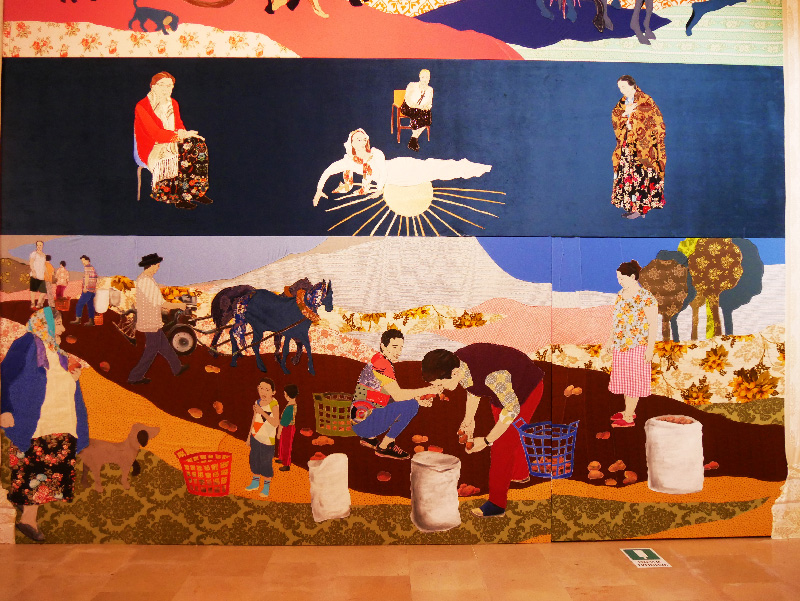
Die 59. Biennale von Venedig, 2.Teil, Länderbeiträge und Begleitveranstaltungen
Polen
Der grossartigste Länderbeitrag war sicherlich der der Polin Malgorzata Mirga-Tas, die ein beindruckendes textiles Manifesto der Roma-Identität und -Kunst erschaffen hat. Selbst eine Romni, zog sie ihre Inspiration aus den astrologischen Fresken des Palazzo Schifanoia in Ferrara. So wurde der ganze Polen-Pavillon zu einem “Bilderpalast”, eine Installation von 12 großformatigen Textilbildern – bezugnehmend auf die 12 Kalendermonate -, die Bilder aus der Kultur der Roma wiedergeben, immerhin der größten europäischen Minderheit.
Die oberste Bilderreihe erzählt die Geschichte der mythologischen Reise der Roma nach Europa. Die mittlere Reihe zeigt Geschichten der Roma in Kombination von realen Frauen mit Magie und Astrologie. Die untere Reihe zeigt das tägliche Leben im Wohnort der Künstlerin, Czarna Góra, sowie in anderen Roma-Siedlungen des Tatra-Gebirges.
Diese Arbeit soll innerhalb weniger Monate vor Ort entstanden sein, unter Mitarbeit von Kolleginnen, wobei Textilfragmente von Kleidern ihrer Familie und aus dem Freundeskreis zum Einsatz kamen. Aus diesem schnellen Arbeiten (ähnlich wie beim Fresko) resultiert ein frischer Ausdruck der Textilbilder, die trotz des hohen Anspruchs niemals das Alltägliche verleugnen. Der Titel der Arbeit “Re-enchanting the World” bezieht sich auf die Wiederbelebung einer friedlichen Gemeinschaft beziehungsweise einer transnationalen Kultur.
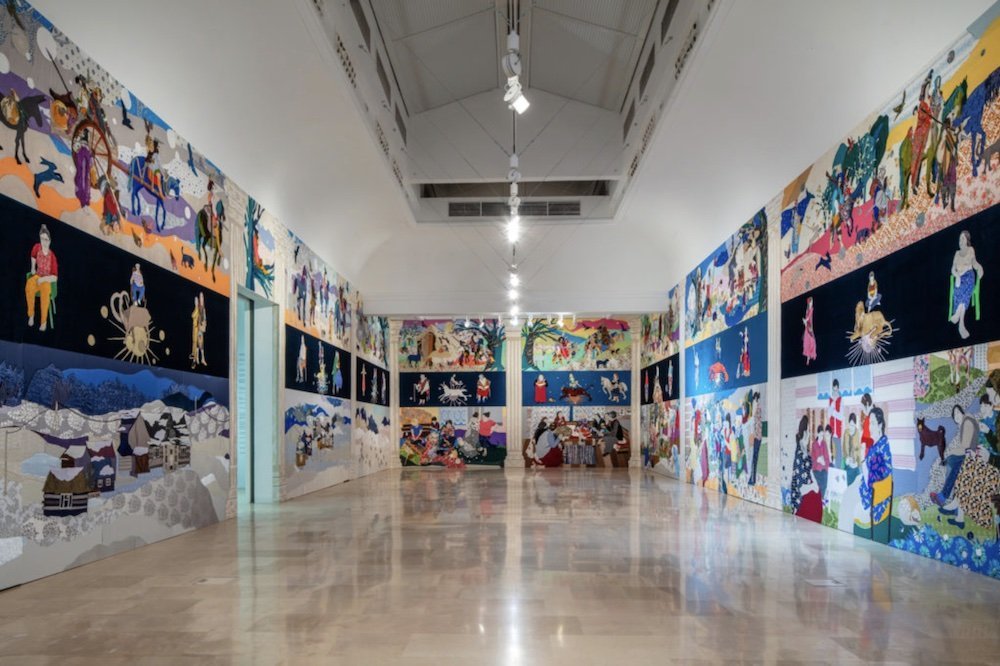
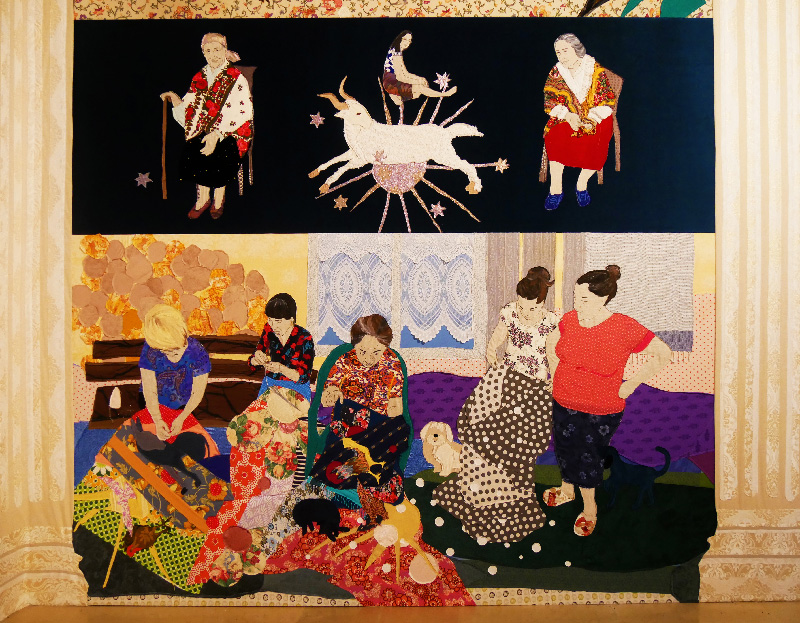
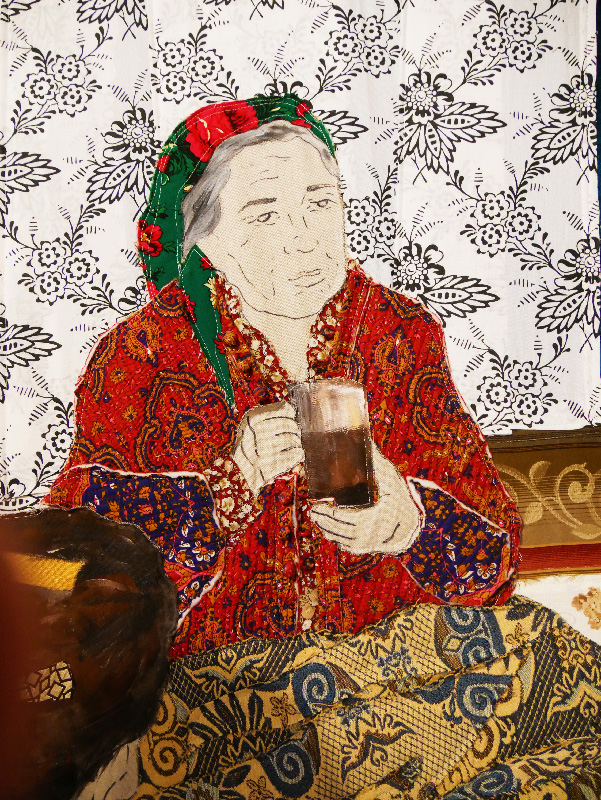
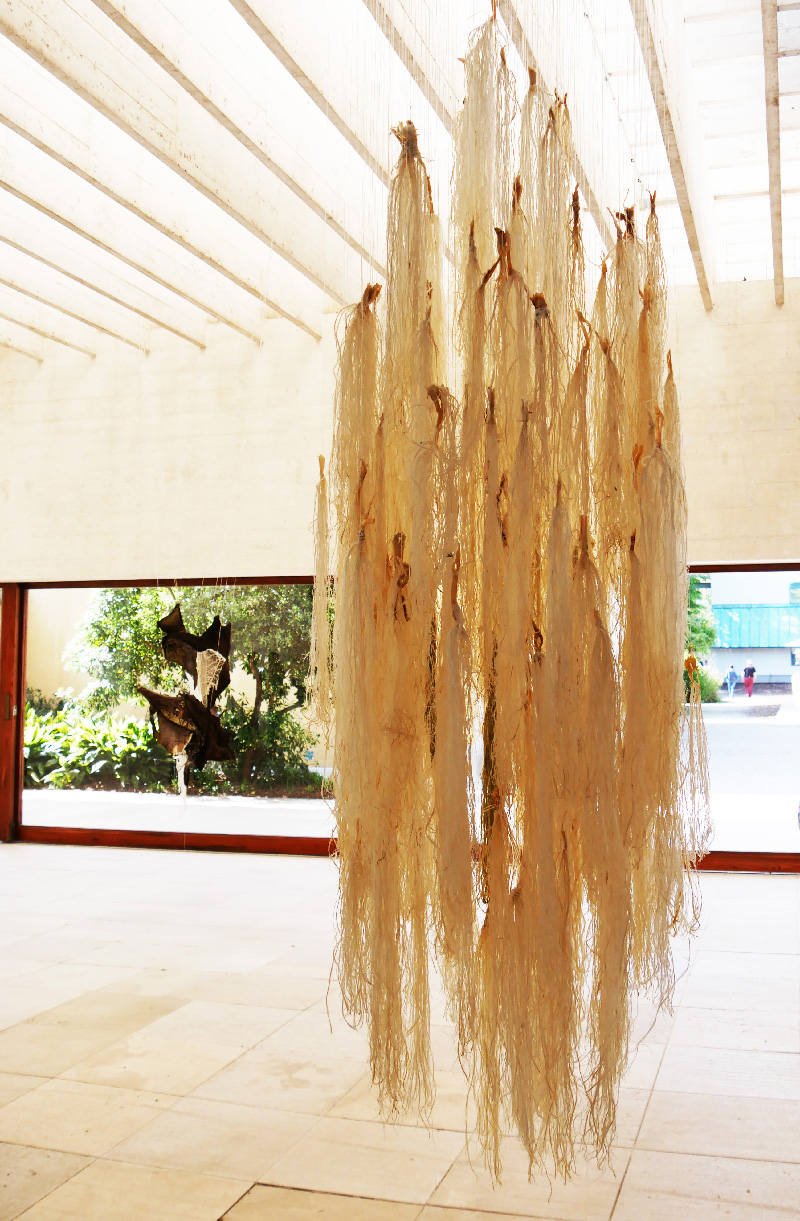
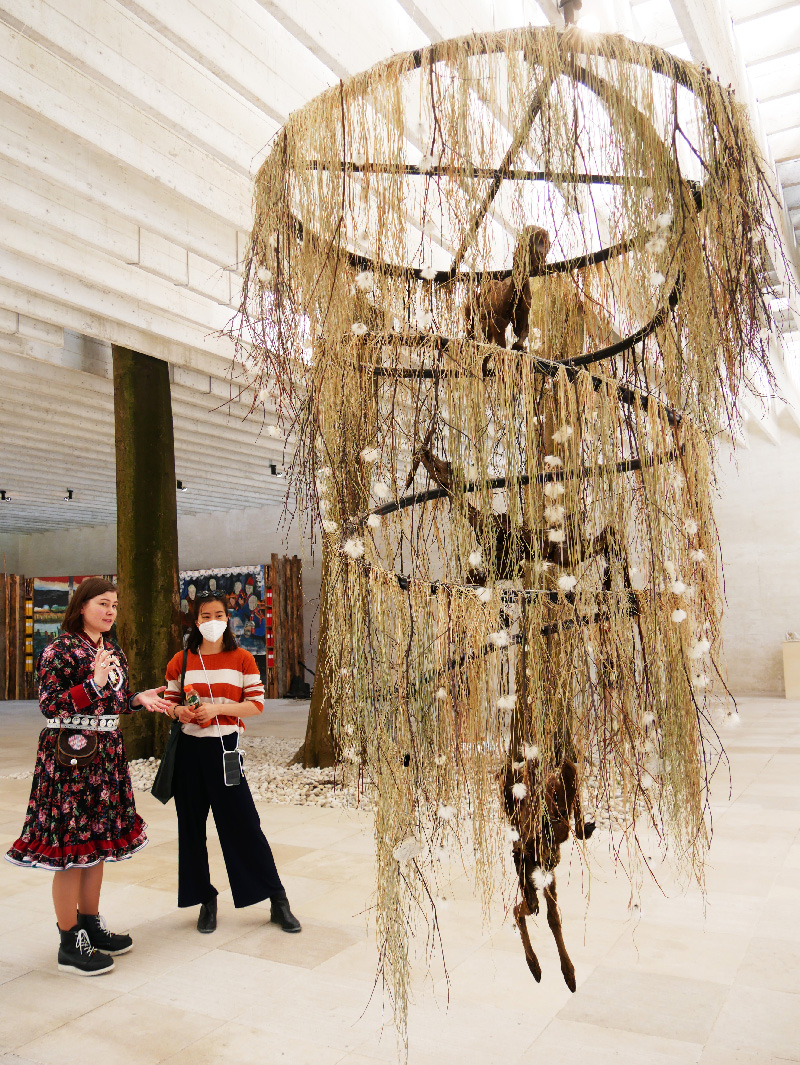
Der Samische Pavillon
Der zweite Ort, an dem ich begeistert war! Zum ersten Mal war der schöne Pavillon der Nordischen Länder (Finnland, Norwegen und Schweden) umgetauft zu ‘Samischer Pavillon’. Gezeigt wurden die Arbeiten dreier Sami-Künstler, von denen mich vor allem die von Máret Ánne Sara interessierten. Sie macht textile Installationen mit den Sehnen der Rentiere, die den Geruch dieser Tiere als nonverbale Kommunikation wiedergaben. In einer weiteren Arbeit betrauert sie den Verlust vieler Tiere durch staatliche Verordnungen, sowie durch den Klimawandel.
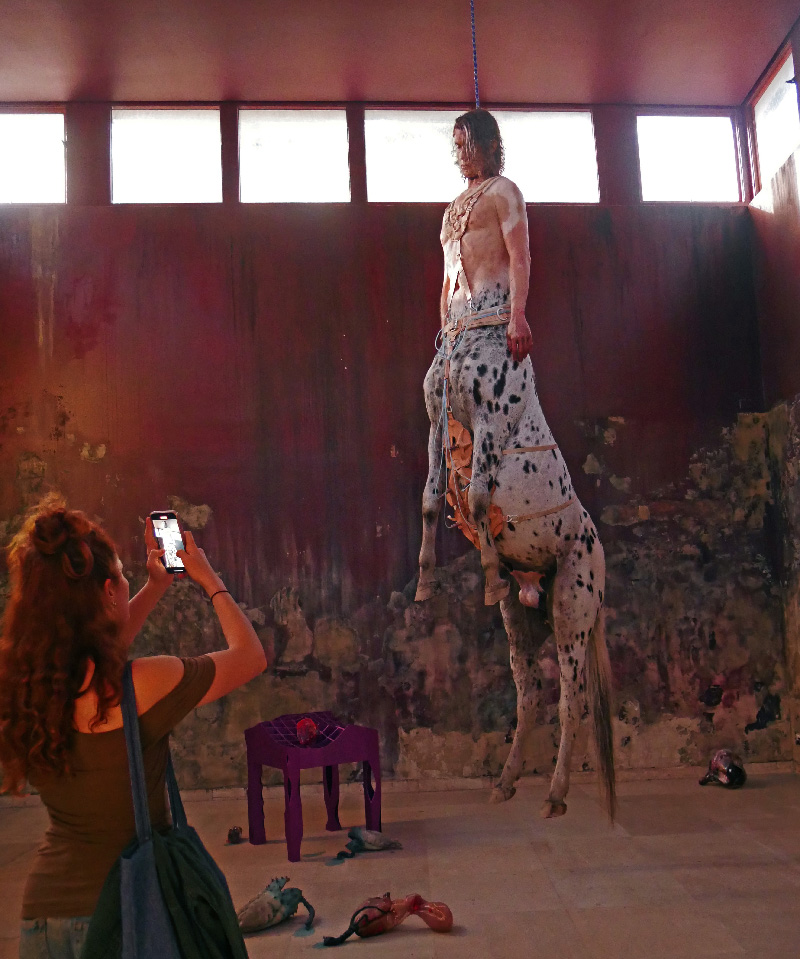
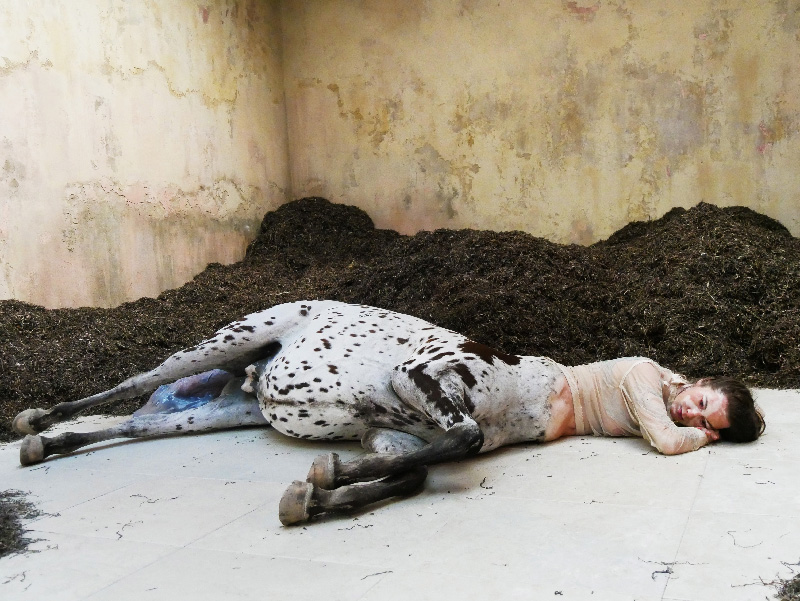
Dänemark
Der dänische Pavillon zeigt zwei Installationen mit Zentauren von der Künstlerin Uffe Isolotto unter dem Titel “We Walked the Earth”. Es ist nichts Textiles in eigentlichem Sinne, und schon gar nichts Fröhliches, aber dermaßen gut gemacht, dass es einem richtig den Atem nimmt. Isolotto sieht ihre Figuren als Mischwesen, als Sinnbild einer posthumanen Welt: “Sie versuchen in einer Welt zu überleben, in der es nicht mehr ausreicht ein Mensch zu sein”.
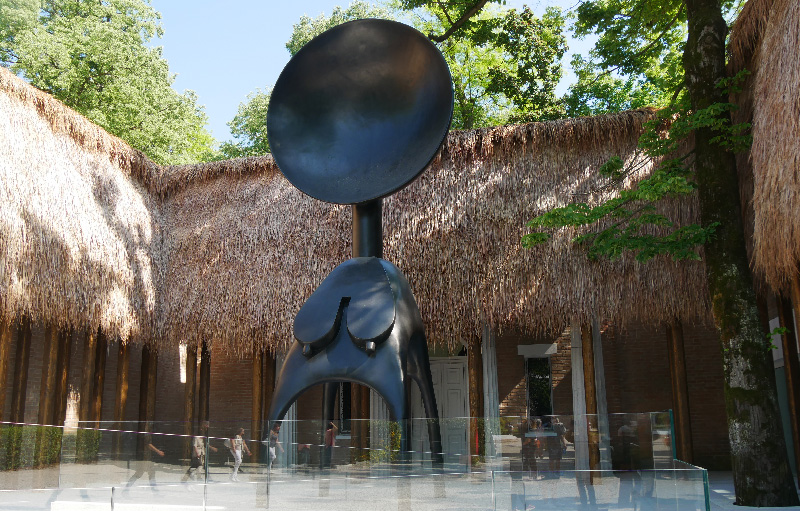
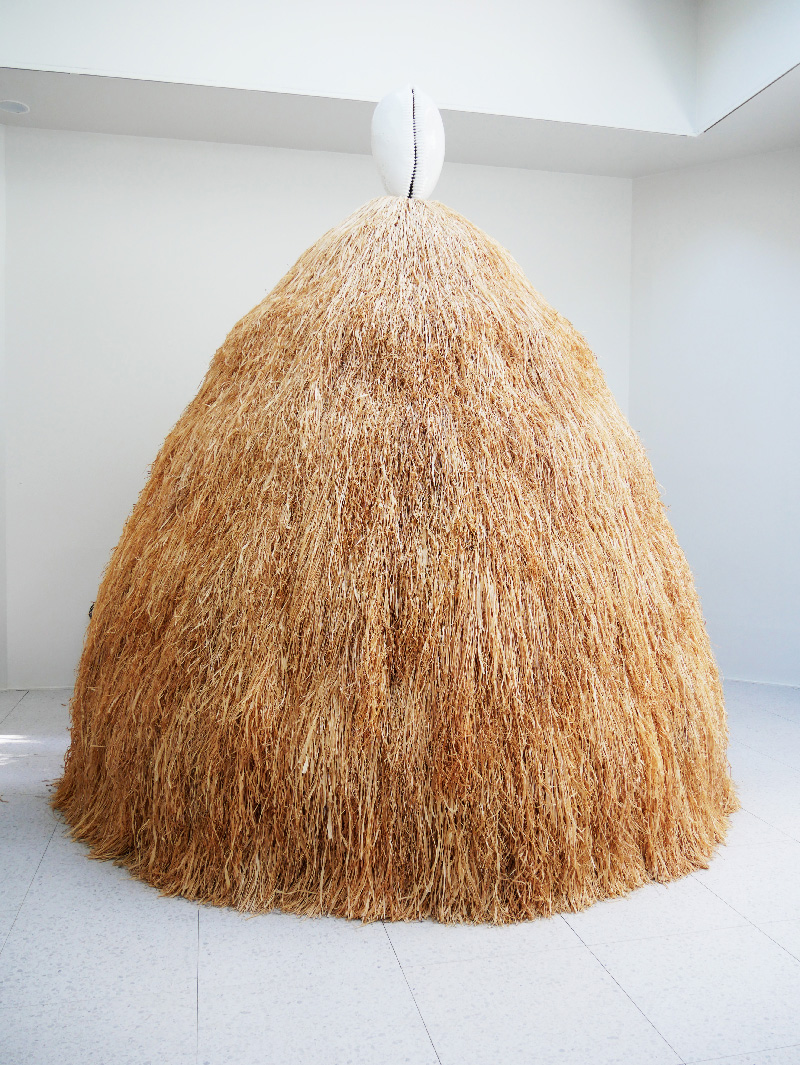
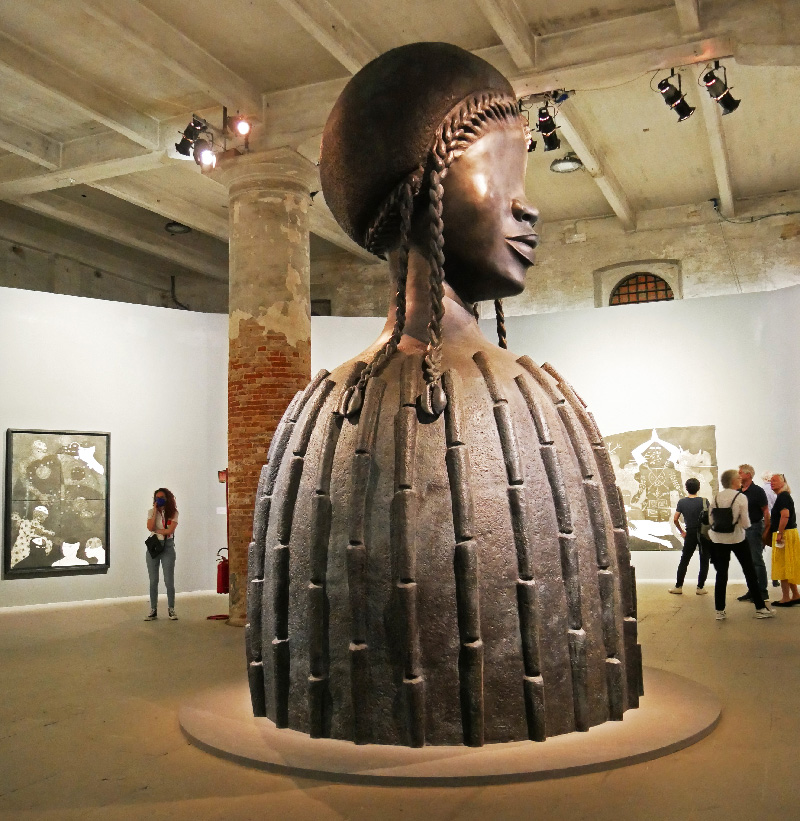
USA
Die USA zeigt Arbeiten einer schwarzen Künstlerin, Simone Leigh.
Der Pavillon wurde zu einem “Afrikanischen Palast der 1930er Jahre” mit Strohmatten bedeckt wie eine afrikanische Hütte. Auch ihre überwiegend nicht textilen Skulpturen waren sehr beeindruckend! Simone Leigh erhielt diesmal den Goldenen Löwen für Ihre Arbeit!
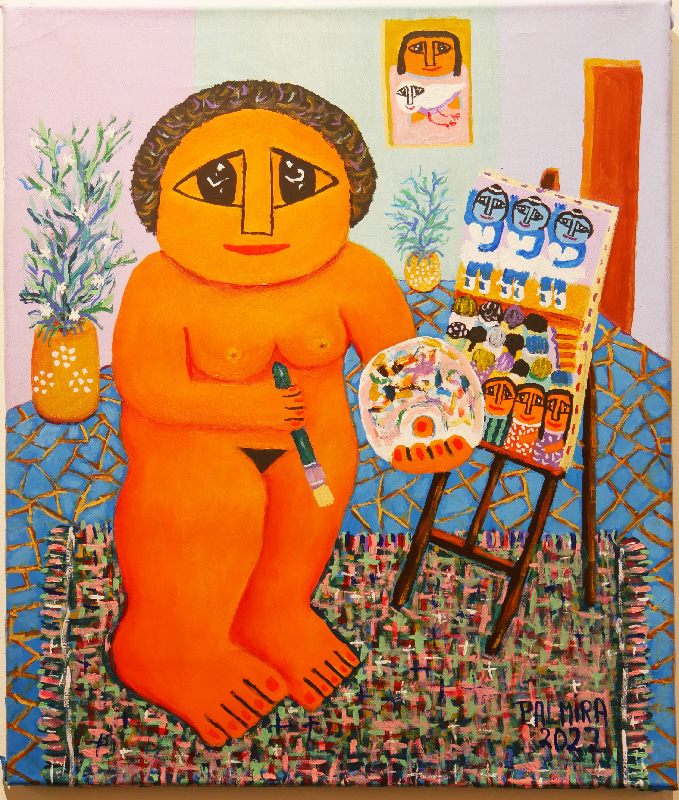
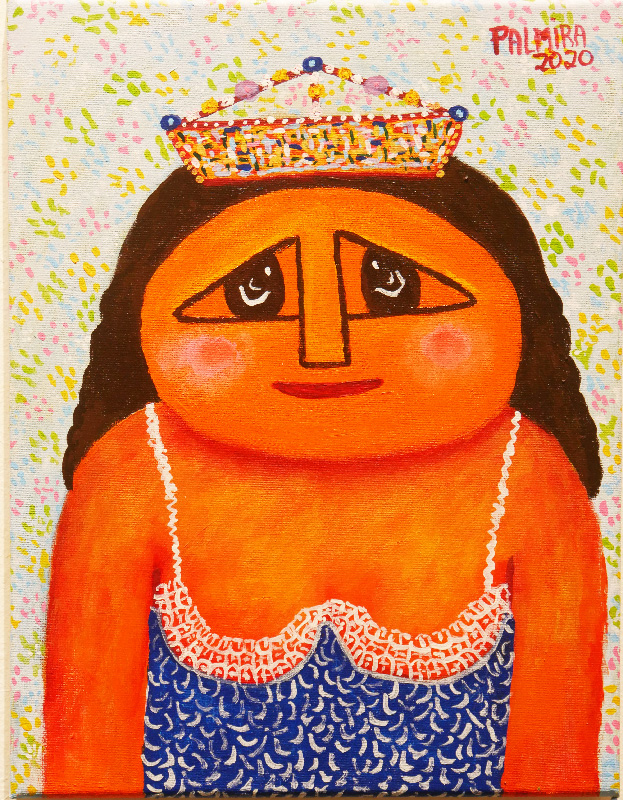
Venezuela
In diesem Pavillon überraschte mich die naive Malerin Palmira Correa, die sehr farbige Figuren malt, die man einfach mögen muss. Ich fand sie auch sehr anregend für meine textil orientierte Leserschaft, weil sie Prinzipien wie Formwiederholungen, Farbkontraste, etc. wie im Textildesign einsetzt.
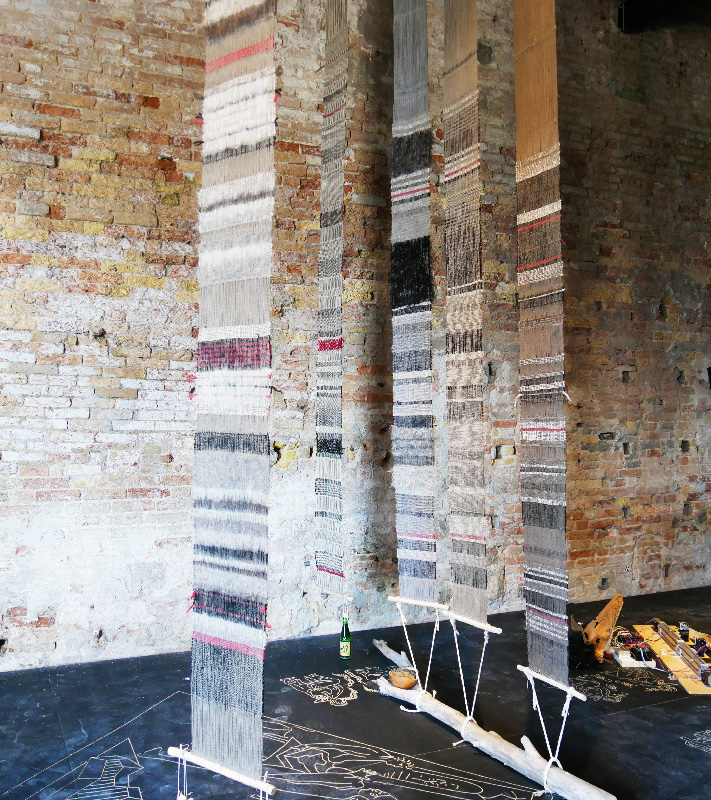
Mexico
Dieser Pavillon war sehr enttäuschend. Die Künstler wollten “alternative Sichtweisen und eine dekolonialisierte Zukunft zeigen”. Als Betrachter freute man sich zwar, dass Gewebtes gezeigt wurde, verstand aber nicht, wozu und weshalb nicht mehr darüber zu erfahren war.
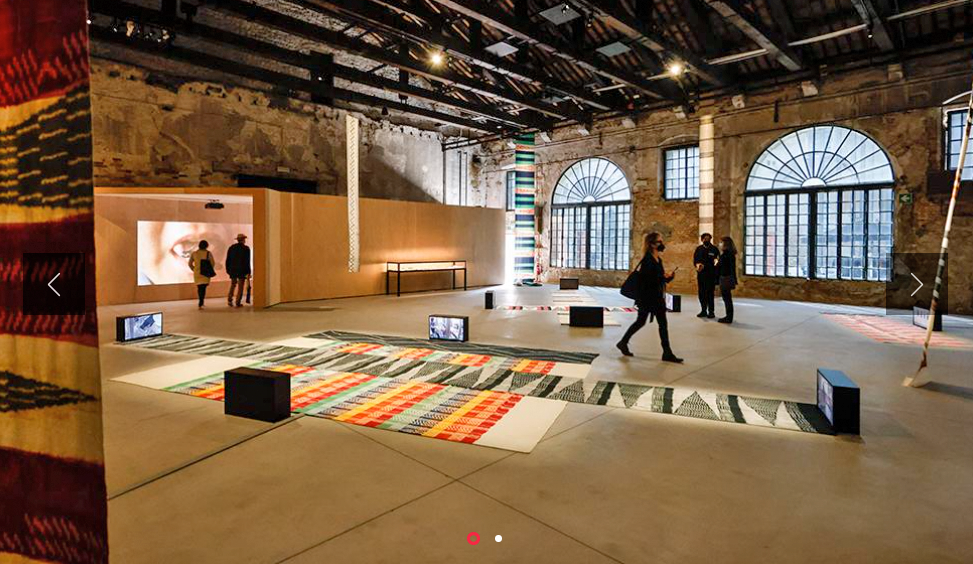
Philippinen
Auch in diesem Pavillon hatte man eine Performance mit Textil und Klang gestaltet, wobei leider nichts über die Textilien (Ikats) zu erfahren war.
Das machte den Eindruck, als seien sie nur eine unwichtige Nebensache!
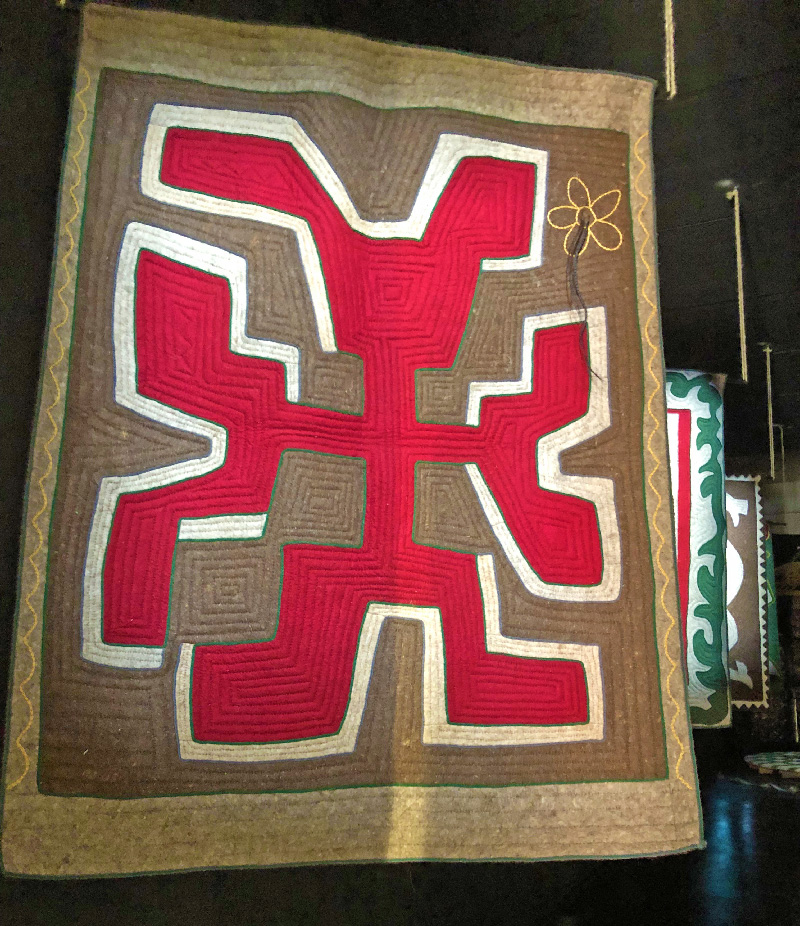
Kirgistan
Dieser Pavillon zeigte die textile Installation “Gates of Turan” von dem iranischen Künstler Firuz Farman Farmayan, an der sehr viele kirgisische Kunsthandwerker beteiligt waren. Diese werden jedoch nicht erwähnt,
was zu einem Skandal in Kirgistan geführt hat.
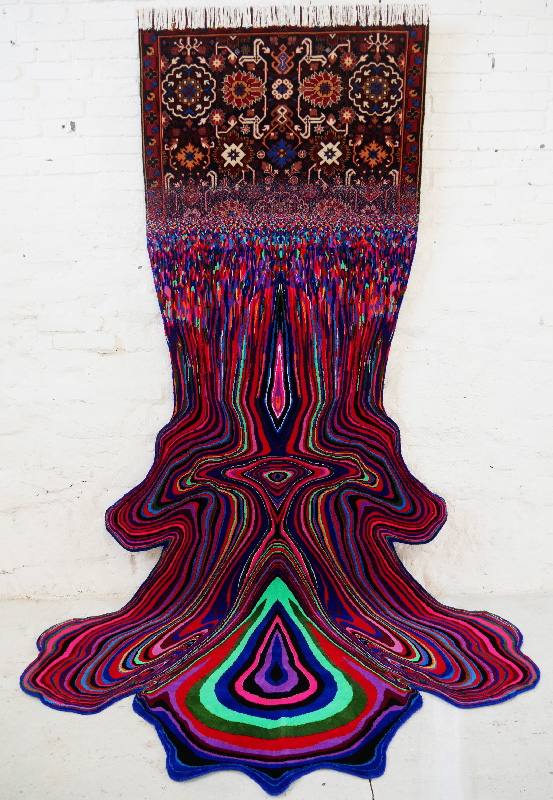
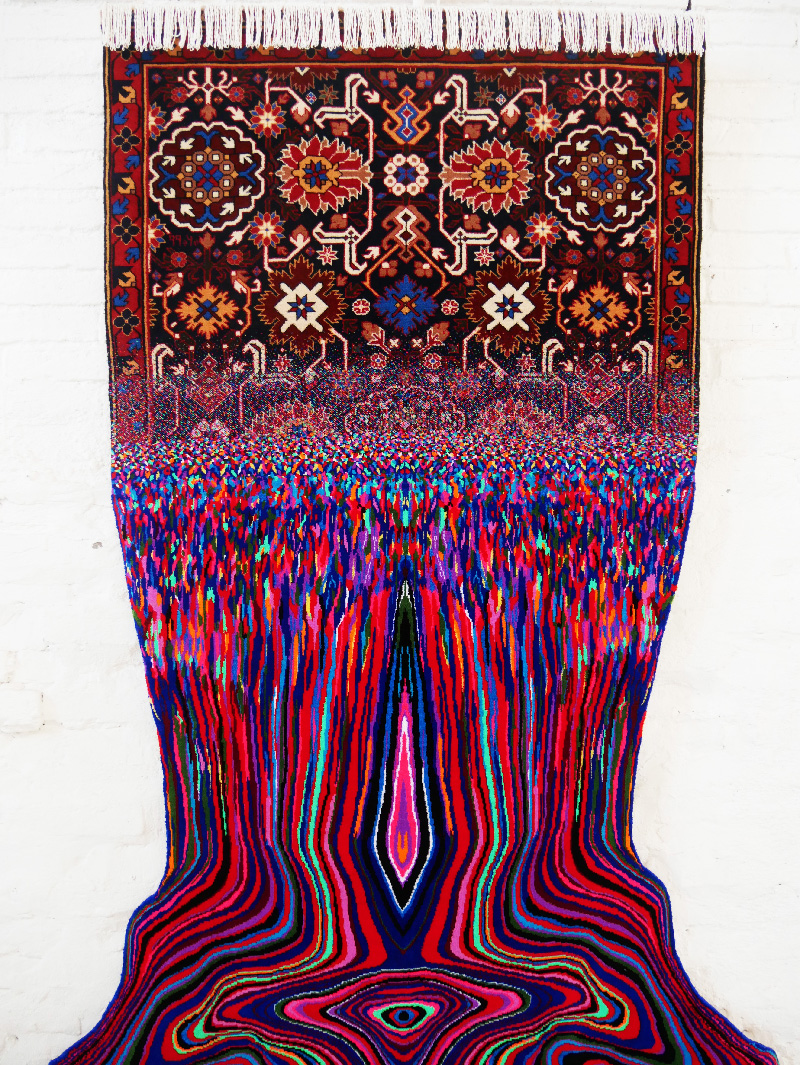
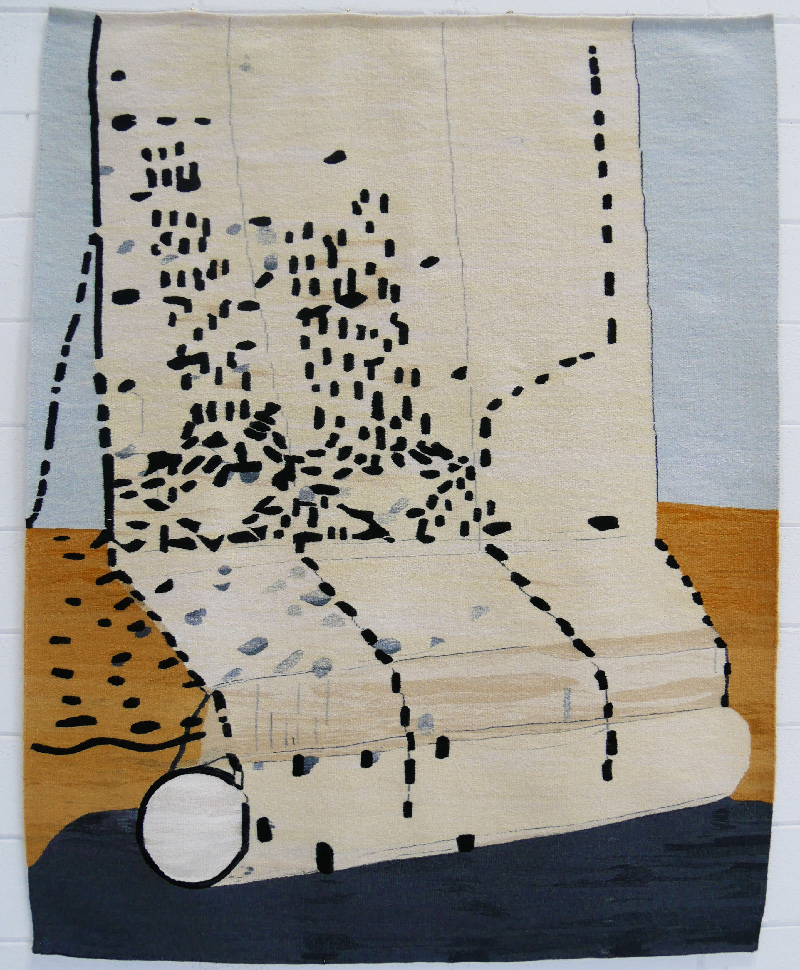
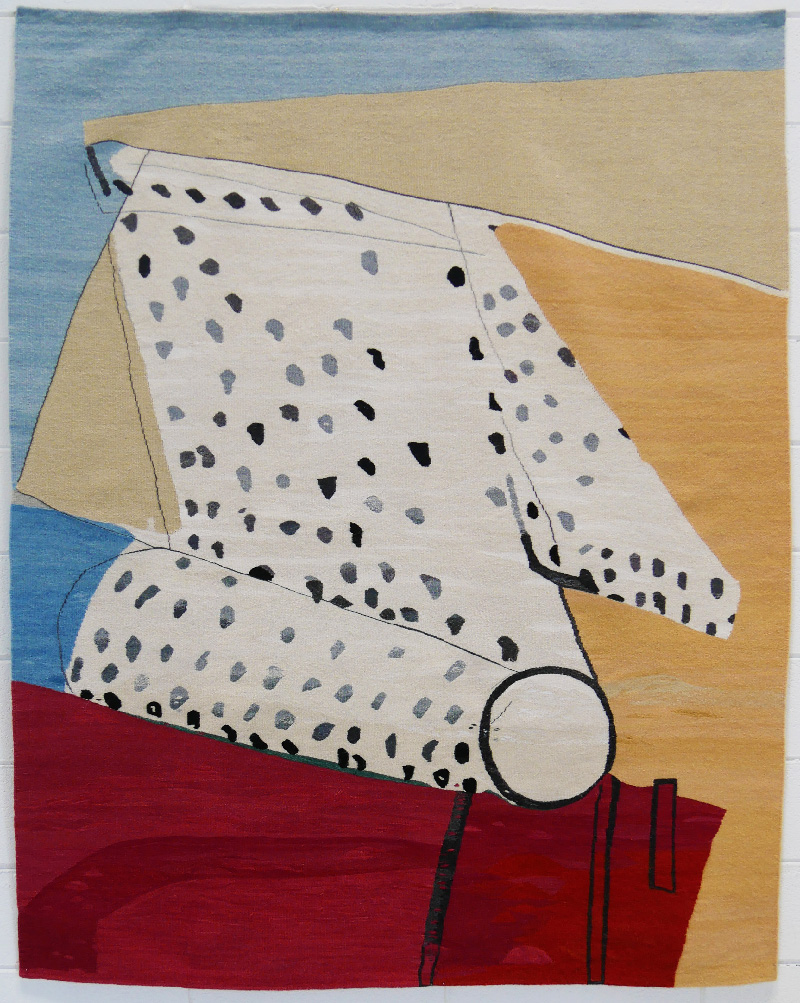
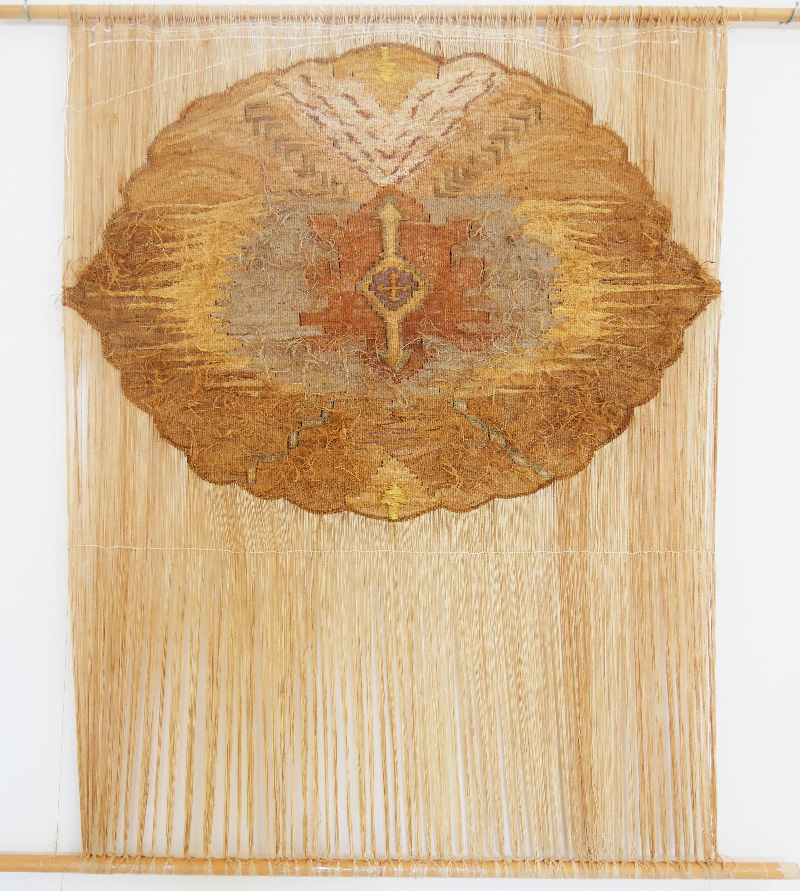
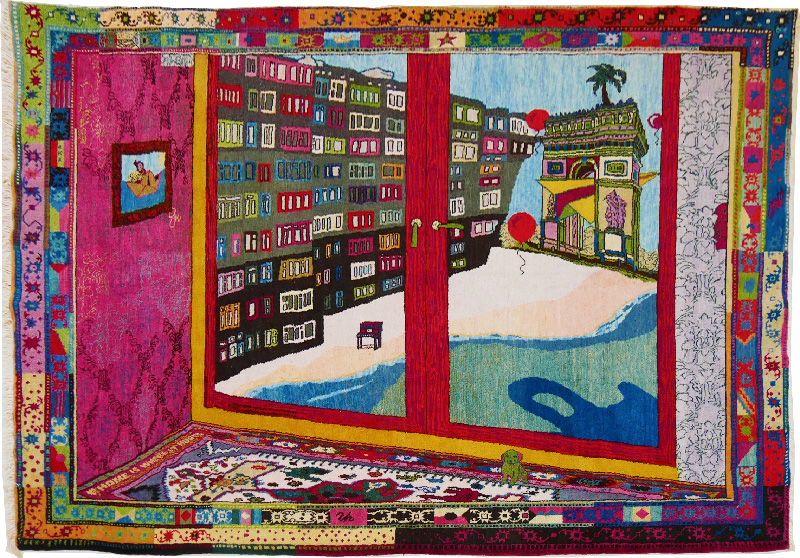
Die Ausstellung “SILK”, ausgerichtet vom Goethe Institut im Kaukasus und der Guidecca Art District, zeigte mehrere beeindruckende textile Arbeiten
u. a. von Faig Ahmed, bekannt für seine Transformationen von dekorativem Kunsthandwerk (inzwischen ganz und gar nicht mehr neu), sowie von der auch in Deutschland bekannten Künstlerin Nino Kvrivisvili, deren schöne minimalistische Tapisserien die georgische Seidenindustrie zum Thema haben.
Lisa Battachi´s handgewebte Teppiche sind Teil ihres Projektes “Sand Storms in Medio Mundi”. Sie handeln vom Warten auf eine neue Weltanschauung, die die heutige Ideologie des Fortschritts ersetzen könnte.
Araks Sahakyan hat einen Teppich “All Windows of my Home” geknüpft, von dem ich etwas weniger überzeugt war, aber Knüpfteppiche sehen halt fast immer gut aus.
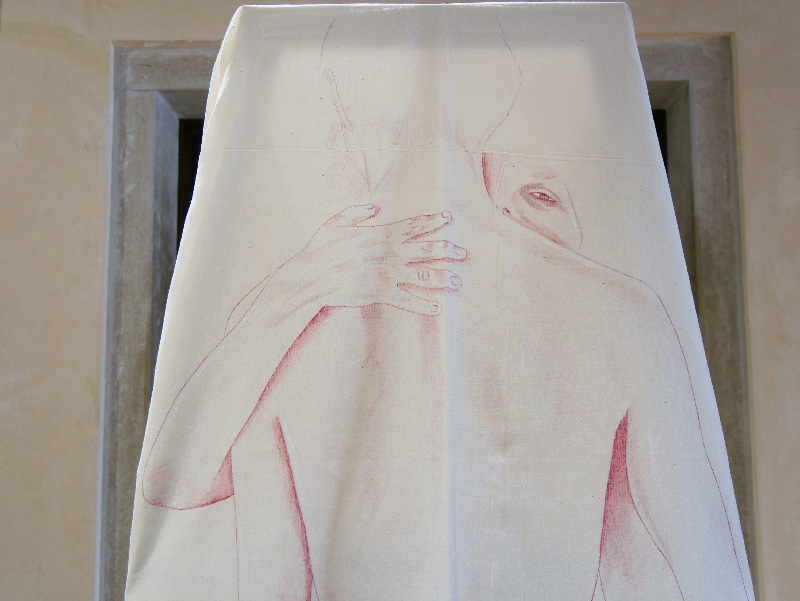
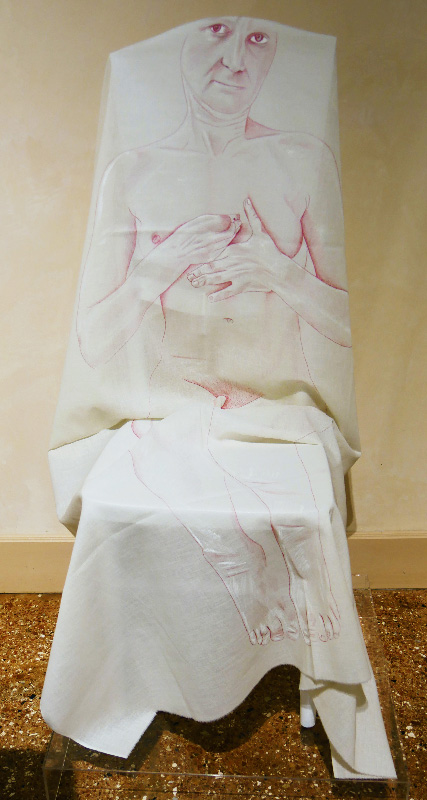
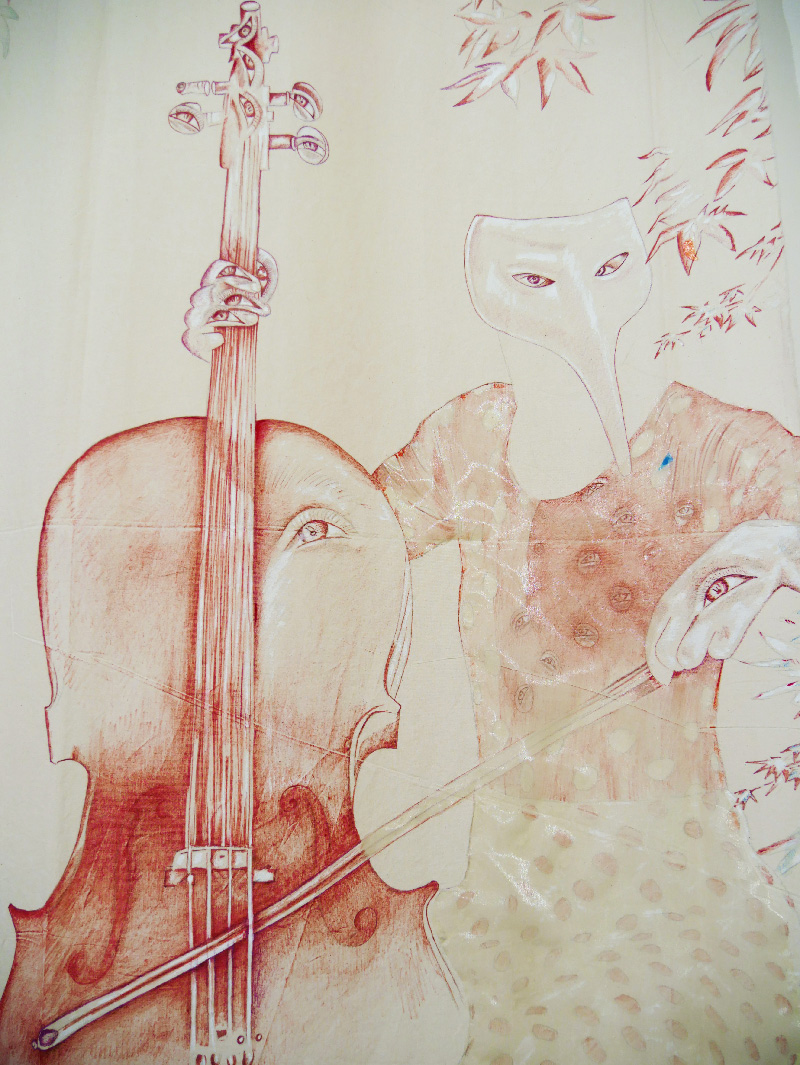
Die Ausstellung von Ewa Kuryluk “White Kangaroo” im Palazzo Querini auf Dorsoduro bot mir die Gelegenheit, Arbeiten dieser Künstlerin endlich einmal in echt zu sehen! Es lief gerade ein lautes Interview mit ihr auf Video, wobei ihre Stimme mich richtig nervte. Das war die erste Irritation, es sollten noch weitere folgen (so mochte ich ihre farbigen Bilder eher nicht). Trotzdem mag ich ihre intimen Zeichnungen auf Stoff, die Erotik, Trauer und Erinnerungen ausdrücken.
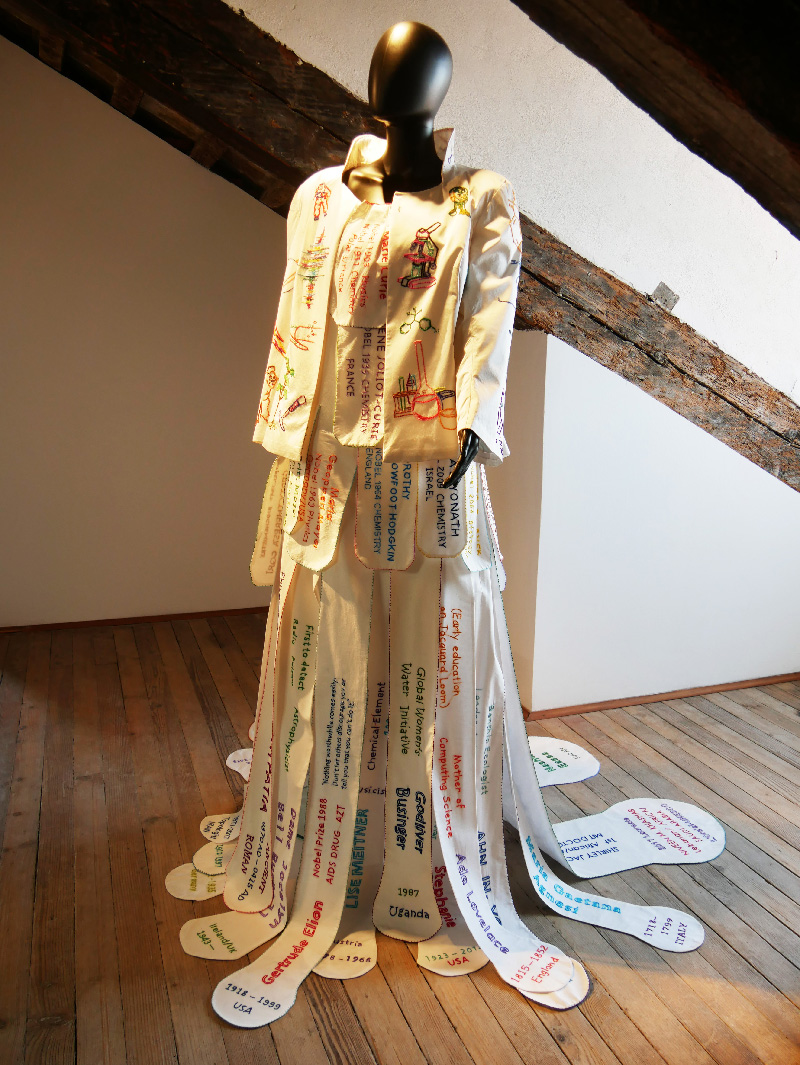
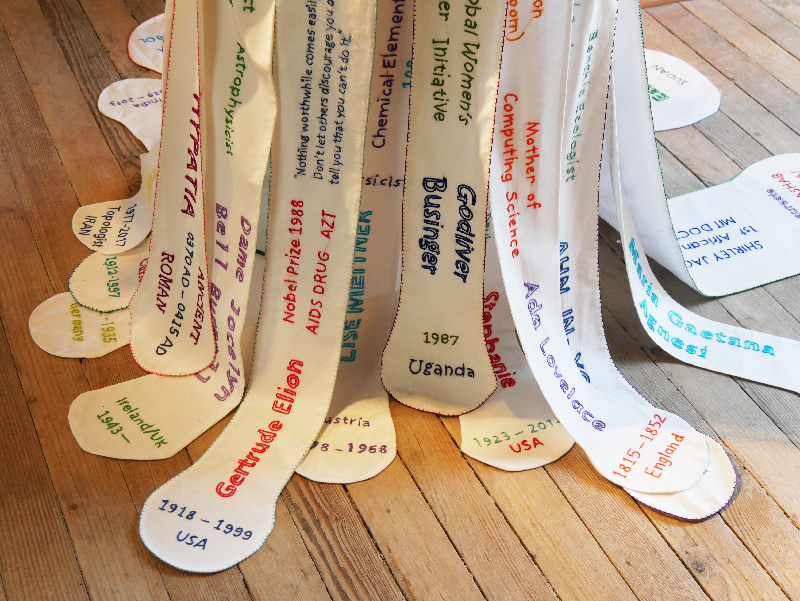
Die Ausstellung der Arbeit “Ladies in Lab Coats” von Marie Bergstedt bei der European Cultural Foundation im Palazzo Mora. In dieser Arbeit werden die wissenschaftlichen Beiträge von Frauen über die Jahrhunderte gewürdigt. Ich kannte diese Arbeit bereits aus Madrid, wo sie 2019 während des Worlds Textile Art Meetings zu sehen war. Hier wird diese wichtige Arbeit einem größeren Publikum präsentiert.